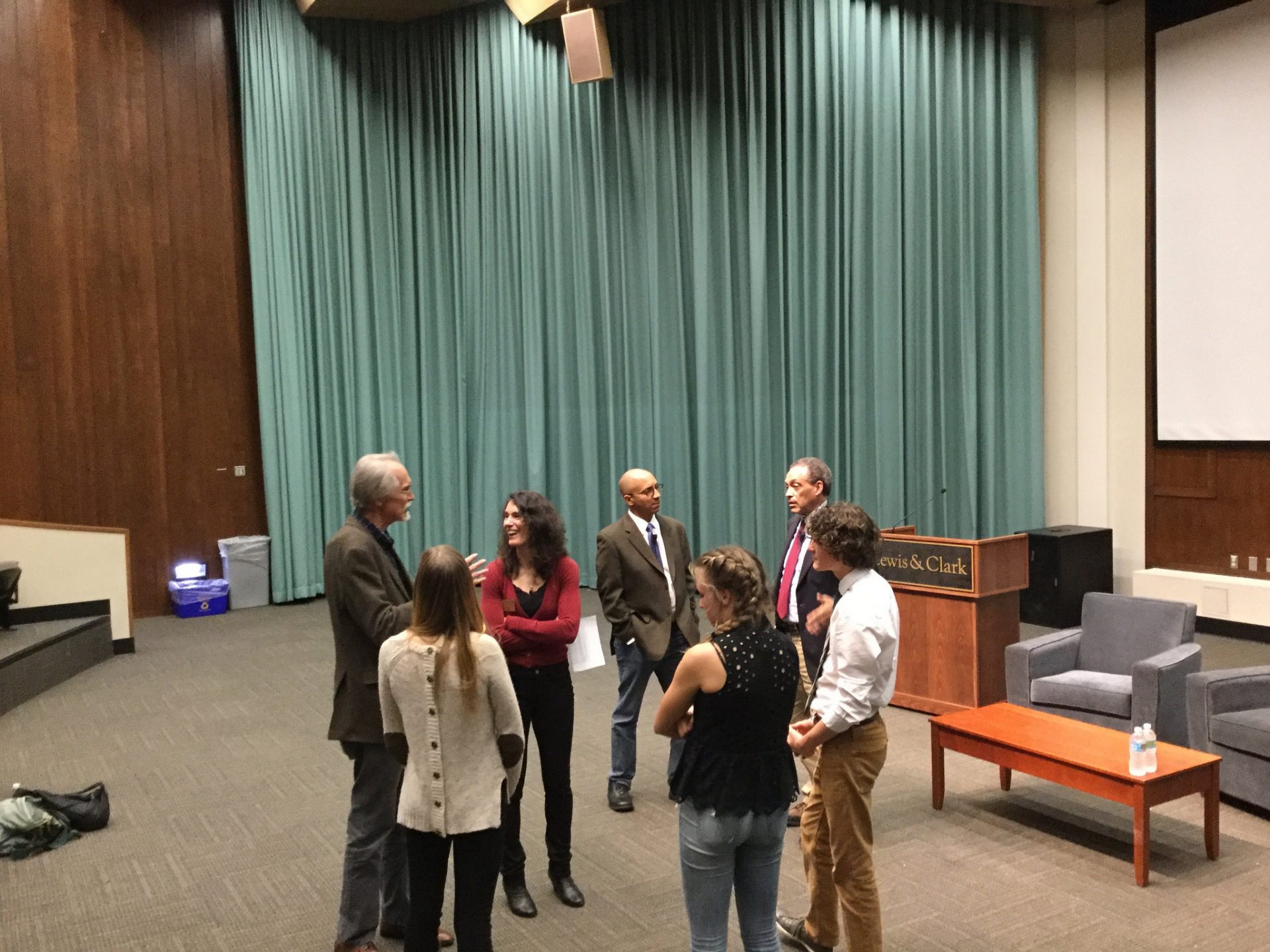
Is there such thing as a natural disaster? Do certain populations suffer from environmental hazards more than others? These were some interesting inquiries explored during Lewis & Clark’s 19th Annual Environmental Studies (ENVS) Symposium from Oct. 18-20. This year’s theme was Equity and Earth: Intersections of Social Justice and Environment. The symposium explored the importance as well as the gaps in scholarship and activism.
The Director of the symposium was Associate Professor of Geological Science and Director of Environmental Studies Elizabeth Safran. The symposium was co-chaired by Blake Slattengren ’18, Daphne Yuen ’17 and Kori Groenveld ’18, and the panels were organized by Tarun Bishop ’18, Gabby Francolla ’18 and Audrey Stuart ’17. Fewer events were held this year than in past years.
The co-chairs constructed the theme around environmental justice as they thought it was relevant to LC’s general interest in social justice and the broader challenge of an increase in societal environmental issues.
“Instead of organizing a large number of events, we focused our efforts on making a smaller number of events really high quality,” Groenveld said. “Each panel featured academic scholars and practitioners from the local Portland area, to ground academic theories and ideals in practice. This also allowed us to discuss these themes from the local to the global [scale].”
Panel organizers carried out research on the panel they prepared.
“[I read] lots of articles published about [(Un)natural Disasters] and then look[ed] for people to bring to campus who would highlight interesting perspectives and bring a wide array of backgrounds to the discussion,” Francolla said. “It was lots of hard work, but it paid off in a great way.”
The symposium opened with a keynote dialogue on the environmental justice movement’s efforts to bring attention to the fact that some communities, such as low-income neighborhoods, are disproportionately burdened with pollution and a range of environmental hazards in the U.S. and around the world. Dr. David N. Pellow, Professor of Environmental Studies and Director of the Global Environmental Justice Project at the University of California, Santa Barbara, discussed the successes and limitations of this movement and considered the problems of the movement’s nearly exclusive focus on and faith in the government and the legal system as a site of resolution.
“What fascinates me most about these issues is their connectivity — the ability and potential of environmental justice movements to link ideas and people and spaces that have not been linked before,” Pellow said. “This is what many scholars are calling intersectional organizing, and it’s important because it has infinite possibilities for expanding people’s horizons and for building solidarities and coalitions among people who might not normally see their fates as linked. That’s the essence of ecological thinking put into action — seeing and making connections in order to transform the world around us for the better.”
Assistant Professor of Sociology Maryann Bylander was one of the panelists for the Dimensions of Development presentation, which delved into the processes of development and their diverse consequences. Bylander’s interest in the study of development was piqued when she spent several years working in the development sector in Cambodia.
“For the symposium, I shared stories I had seen in Cambodia of ‘development gone wrong,’” Bylander said. “Development projects often prioritize the wrong things: donor goals over community needs, infrastructure and ‘investments in things’ rather than ‘investments in people,’ technological innovation over local knowledge, the short-term over the long-term and keeping up their reputation over admitting and taking responsibility for failure.”
Chair and Associate Professor of History Andrew Bernstein participated in the (Un)natural Disasters panel. According to Bernstein, there is no such thing as a purely natural disaster. There are natural hazards, but whether they turn into disasters or not depend on factors within human control.
“When we study disasters, we have to look at all of the human factors involved in creating those disasters,” Bernstein said. “These include economic and political decisions that make certain populations more vulnerable than others.”
The faculty and students were proud of this year’s symposium turnout and accomplishments. For many studying and researching ENVS phenomena, they find it unique as it is composed of a wide array of disciplines.
“I love being a part of the ENVS department,” Francolla said. “I get to take classes from so many different departments and it has challenged my thinking in important and meaningful ways.”
Subscribe to the Mossy Log Newsletter
Stay up to date with the goings-on at Lewis & Clark! Get the top stories or your favorite section delivered to your inbox whenever we release a new issue.

Leave a Reply